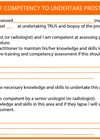Nurses can help support change in prostate cancer care by understanding change management and models and provide leadership in improving prostate cancer care. An important part of being able to lead change is to understand change theories such as the Lewin three step model of change which was described in 1951 [1].
This article will explore Lewin’s model and use an example of a project that the author has recently been part of to show how it improved the care of prostate cancer patients and led to a better holistic approach to follow up.
The problem
Prostate cancer is one of the main cancers for urgent referrals in many trusts, and with one in eight men likely to have prostate cancer it has a big impact on urology services. Prostate cancer treatment has evolved over the last 60 years with improved diagnostics and treatment, and consequent improved survival [2]. Even patients with metastatic disease are living longer on modern treatments, which means that more patients require ongoing specialist care from oncology and urology departments.
One treatment that is helping patients live longer with advanced disease enzalutamide and abiraterone, the use of which has increased since 2015. The National Institute for Health and Care Excellence (NICE) states that the defined daily doses have risen from 350,000 in 2015 to 600,000 in 2020 [3]. Since then, the guidance has changed, and we now have other new second-generation hormones; it is likely that there is increased uptake of the newer treatment modalities.
This increase in uptake of newer treatments and of survival requires more clinic slots for patients and staffing to deliver treatment, support and regular scheduled follow up. This has an impact on an already overstretched workforce as in many other services. For example, the Luton and Dunstable Hospital previously had just one oncology consultant and two uro-oncology nurses to cover all urological cancers. In 2018 a prostate cancer specialist nurse was employed to help with the increase in demand. Even so, the oncology clinic was very overstretched, with patients often being cancelled to fit more urgent cases in and some patients needing a review to have their enzalutamide resupplied. This meant that often patients that had just finished curative treatment would have appointments postponed with some of them waiting for as much as nine months to see the consultant. It was clear that there was a problem. But like many trusts it was a case of firefighting.

Figure 1: Process map 1 (one of the first maps produced with the working group).
Using theories to help introduce change
It was clear that there was need for change with the service. But how can one nurse make an impact on a service that had been running the way it had been for years? Where does one start in trying to improve the system?
This is when you need to look at change theories to help start a project. Amongst the many theoretical approaches available, Lewin’s theory (1951) is one that is easily applicable to clinical practice in three simple steps [1].
Unfreezing
Unfreezing is the first stage of change; this is finding methods to assist you in overcoming resistance from individuals. This involves breaking down current processes into individual components. The website Mindtools can help with practical steps to help you with the unfreezing stage [4]. First, you need to determine what needs to be changed. For example, with the oncology clinic, we were able to identify discreet categories of patients who attended the clinic over a four-week period:
- Those on chemotherapy for review and consultant input.
- Post radiotherapy, on hormones, and with some common side-effects of treatment.
- On second generation hormones like enzalutamide and biochemically stable.
- On second generation hormones with relapse.
- Finished chemotherapy and on long-term hormones like goserelin.
- Palliative and on best supportive care, including those needing palliative radiotherapy.
- Metastatic spinal cord compression patients.
We also reviewed the number of patients who were moved from their appointments to fit urgent cases in, and those on the waiting list; this numbered 80 patients, bearing in mind we had only 16 consultant slots.
Once this was completed, it was possible for the prostate cancer nurse and the oncologist to work out which patients could be seen by a nurse with little consultant input. This allowed the team to establish the number of patients who could be seen by the nurse. The alternative option of employing an additional oncologist was more difficult for reasons of finance and time required.
The obvious solution was to set up a nurse-led oncology clinic which would support the overstretched service and reduce the waiting list. It was beneficial that the prostate cancer nurse was also a non-medical prescriber, although it was not initially clear whether the nurse would be able to prescribe the new-generation hormone therapies. Resolving this issue involved investigation and networking via events like British Association for Urological Nurses (BAUN) or local cancer alliance meetings and using links with other trusts to establish best practice (most nurses are very willing to support others). From this process it became apparent that having agreed trust guidance and protocols would avoid any issues with prescribing of new generation hormones at a nurse-led clinic.
Change
Once you have your information and a vision of what you want to change this is where the second part of Lewin’s change theory comes into play. If you have data and a consultant who is keen on your change, you have the driving force to make it happen. You must then establish who you need as a team to make the change happen. In this case a working group including the general service manager, deputy head of nursing in cancer services, all uro-oncology nurses and the oncology consultant, was set up. To be able to lead change you need good leadership skills; good communication, interpersonal skills and developing a sense of achievement will gain you support which is essential in meeting challenges as a team [5].
One challenge we faced was exploring how the nursing team would support the patient better. The solution to this was to establish additional nursing clinic time to provide holistic needs assessments, wherein patients and nurses would have time to discuss the patients’ needs and concerns. Previously, the nursing team had found it difficult to incorporate assessments to support not just the medical aspects of care but the concerns of the patient as well.
We worked as a team to produce process maps, which led to the idea of two nurse-led clinics. One would have seven 30-minute slots for the end of chemotherapy but stable patients and the stable second-generation hormone patients. The second clinic would be for patients that may still be on hormones after radiotherapy and with common side-effects that could be managed with nurse support. New patients to the clinic would have a 30-minute slot with the nurse to do a holistic needs assessment and deal with any concerns. Follow-up appointments were for only 15 minutes. Therefore, 10 slots a week could be achieved. From this mapping it was worked out that in a month a nurse could support 28 second generation hormone and chemotherapy patients, and 40 radiotherapy patients. Even after mapping challenges will keep arising. For example, to set up two clinics we needed to look at nursing time and the room required to be able to do these clinics. Workplans were revised to be able to get the clinics running.
Once you have worked through the challenges and have a plan, you need to start putting it in place from a practical point of view. New guidance was written to support the change, and this ensured that there was good governance. Each member of the team had their own aims and objectives to get the clinics up and running. This is where having a good leader helps; being the point of contact for all and working side by side with team members is key.
Refreeze
In 2020 the two new clinics started running. Patient feedback started to become more positive, and the number of cancelled appointments started to decrease. The waiting list was reduced to about 20 patients which became much more manageable. This is the final part of Lewins theory known as refreezing. This is when the team takes on the change and it becomes a stable part of care. The clinic is now very well-established and provides follow-up care for all stable patients on treatment or having finished treatment.
This was the first of many changes in the department that have been made over the past few years. It led onto a bigger project of changing how active surveillance patients are supported for prostate cancer. We have also achieved funding for a new advanced nurse practitioner (ANP) role that is now supporting the diagnostic side of the pathway. By bringing in improvements and showing that more advanced nurses are needed it has allowed the team to expand. From March 2024 the team now has one prostate CNS, two uro-oncology nurses and two support workers. The role of an ANP has been shown to help the utilisation of the workforce on the impending rise in demand for health services [6].
Conclusion
Understanding a change theory can help nurses implement a successful change in a clinical setting. A good nurse leader is needed to achieve successful change. To be a good nurse leader you require good communication skills, knowledge of change theories and the ability to work in partnership with other members of the team [7]. It has been suggested that often nurses are conditioned to see others as leaders instead of seeing themselves in that role. Even though nurse training incorporates leadership training many nurses feel that they are unprepared to take on leadership roles [8].
Treatment for prostate cancer is evolving and prostate cancer diagnosis is increasing, meaning teams may have to start reviewing how their pathways are working, which is what happened in the example discussed in this article. The previous way of working was to firefight for many years, and it wasn’t until a new member of the nursing team, who had recently done a leadership course, started to push for change, that a new way of working was successfully established. Despite no additional funding, a fundamental change in how systems are run has provided a better standard of care for patients.
In 2020 the British Medical Association stated that to meet the pace of demand for the NHS the consultant workforce required considerable growth [9], and shortages have only worsened in recent years. Sometimes we must utilise what resources we have, and advanced nursing may help with some of the shortfalls there are in prostate cancer care. It is important to take a step back and look at how pathways are running. Rethinking how the systems are working and working as a team is vital. Hopefully, this article will inspire other nurses to take up a leadership role and help develop services to better support prostate cancer patients.
TAKE HOME MESSAGES
-
Work as a team.
-
Always put the patient at the centre of the change.
-
Know your aims and objectives.
-
Process mapping is key.
-
Find a stakeholder that believes in the vision as they will help get others on board.
-
Senior medical leaders and nurses need to support junior nurses in taking on projects and becoming leaders.
References
1. Lewin K. Field Theory in Social Science. New York, USA; Harper: 1951.
2. Ehtonen M, Kellokumpu-Lehtinen PL. The past and present of prostate cancer and its treatment and diagnostics: A historical review. SAGE Open Med 2023;11:20503121231216837.
3. NICE. NICE impact prostate cancer. 2020.
https://www.nice.org.uk/about/what-we-do/
into-practice/measuring-the-use-of-nice-guidance/
impact-of-our-guidance/nice-impact-prostate-cancer
4. MindTools. Lewin’s Change Management Model.
https://www.mindtools.com/ajm9l1e/
lewins-change-management-model
5. Ellis P. Leadership, Management and Team Working in Nursing. UK; SAGE Publications: 2021.
6. Woo BFY, Lee JXY, Tam WWS. The impact of the advanced practice nursing role on quality of care, clinical outcomes, patient satisfaction, and cost in the emergency and critical care settings: a systematic review. Human Resource Health 2017;15:63.
7. Wagner J. Leadership and Influencing Change in Nursing. Regina, Canada; University of Regina Press: 2018.
8. James AH, Stanley D. Notes On . . . Nursing Leadership. UK; Wiley: 2024.
9. BMA. Consultant workforce shortages and solutions: Now and in the future. October. 2020.
www.bma.org.uk/media/3429/bma-consultant
-workforce-shortages-and-solutions-oct-2020.pdf.
Declaration of competing interests: The author won the Ingrid Fuchs Cancer Nursing Award at the 2023 Nursing Times Awards and is a judge for the 2024 Awards (she has received no financial gain for this).








